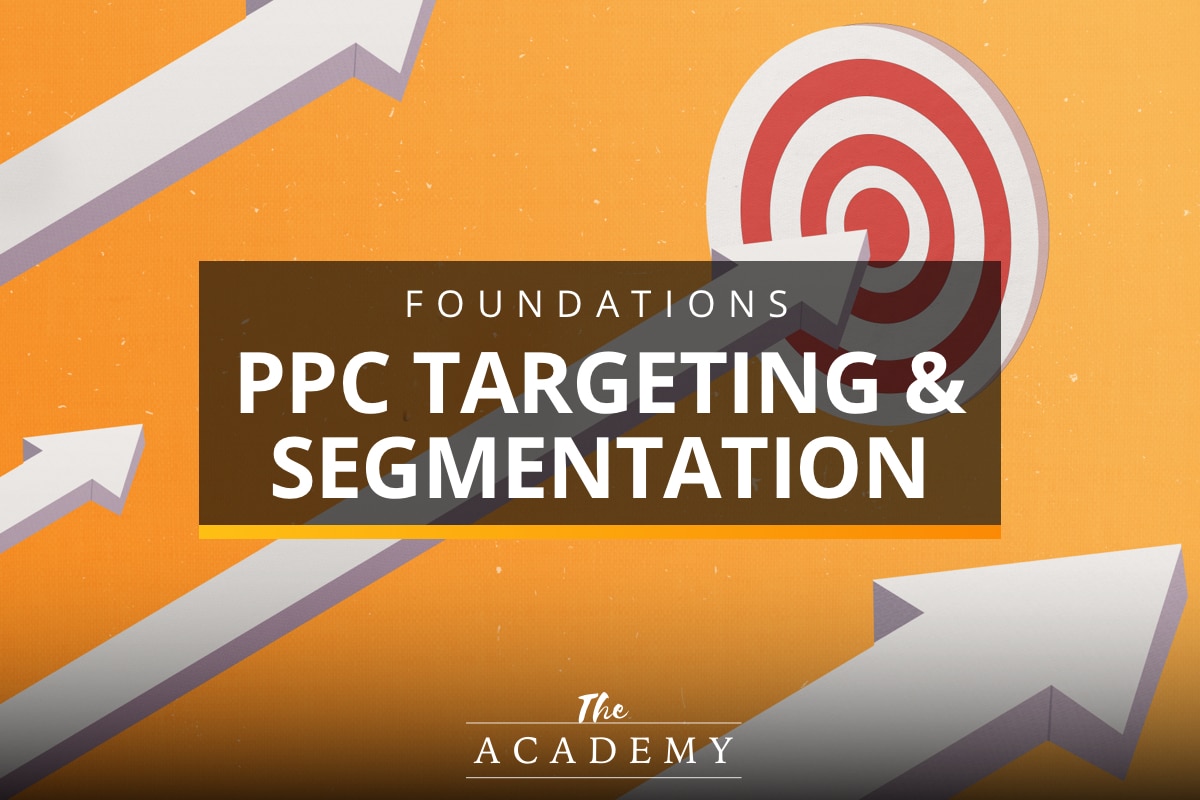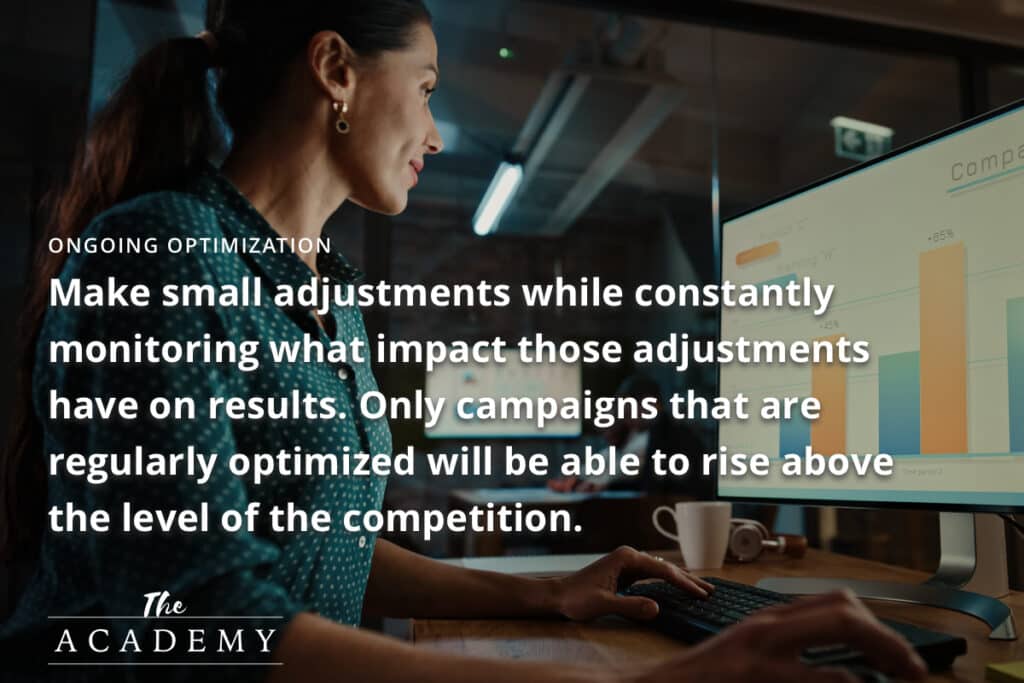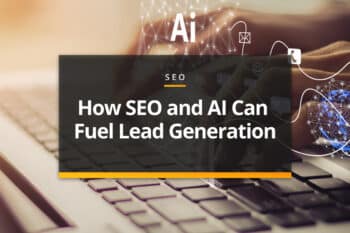
Pay-per-click ads are one of the core elements of most digital marketing campaigns. Whether you use PPC ads as your primary method of lead acquisition, or you use it as a supplemental form of traffic behind SEO, you’ll need to understand how it works and how to get the best possible results for your organization.
One of the keys with PPC ads is to properly target and segment your audience. The internet is a huge place, and not everyone online is going to be an ideal customer for your business. Fortunately, PPC makes it easy to target the right segment of the market, as long as you know how to use it correctly. Let’s take a closer look at targeting and segmentation in the content below, and how you can use these core concepts to increase leads and decrease costs.
What are PPC Ads?
This will likely be a review for many who are reading this page, but let’s quickly start with an overview of what PPC ads are and why they are so popular. The name of this type of ad tells you much of what you need to know; These are ads that you pay for by the click. In other words, each time a web user clicks on one of your ads, you are charged a certain amount of money (correlated to how much you were willing to bid for the ads). The system used for determining the cost of these ads can be a bit complicated and is a topic for another article.
The PPC model is appealing to advertisers for a number of reasons, including those listed below:
- Guaranteed traffic. When you only pay per click, you won’t be spending money unless actual visitors are coming to your site through the ads. This is in contrast to ads that are charged per impression, where you pay depending on how many times your ad shows up, whether anyone clicks or not. So, you can directly control how much you pay for each person that visits your site, and hopefully drive a profitable campaign as a result.
- Instant flow of visitors. As opposed to something like traditional SEO, which is only going to deliver results after investing significant time and effort, PPC ads can bring people to your site almost immediately. As long as you have the budget available to drive visits, you can bring people in with an aggressive ad campaign. This is great for doing things like testing new offers or features on your site. If you have a sale you’d like to promote, plan a PPC campaign and make sure potential buyers see that sale on a landing page.
- Controlled budget. It’s easy to spend a fortune on PPC ads, of course, but you can also easily manage your spend to keep it down to a reasonable level. Even for just a few dollars per day, you could drive some traffic to your pages and start to gain some traction in the market. If your budget increases moving forward, you’ll be able to up your spend in just a matter of moments.
- Seasonality. If you run a business that is seasonal in nature—perhaps one that is based on the weather—you can easily adjust your advertising levels up and down based on the time of year when you use PPC ads. You can spend more and be more present in the minds of your customers when the busy season arrives, and you can back off to save money when things slow down again. The nice thing about this approach is that you can build your campaigns and have them all set and ready to go no matter what time of year it is. Then, just turn on the campaign and set your budget when the time is right.
PPC ads are pervasive throughout the internet because they are effective, relatively easy to manage, and flexible. If you haven’t previously tested out what PPC advertising can do for your brand, now is a good time to start.
The Concept of Targeting and Segmentation
We alluded to the value of targeting and segmentation in the intro to this article, but let’s look closer at it here to explain why this is such an important piece of the PPC puzzle. At the core of targeting and segmentation is the idea that you need to be marketing specifically to people who are likely to be customers.
That makes sense. After all, if someone is highly unlikely to ever buy from you, there isn’t much reason to get them onto your site in the first place. And, if you are paying each time you bring in a visitor through PPC, you have all the more motivation to make sure everyone who clicks is a potential buyer.
In the big picture, this idea is not particularly new to marketing. Professionals in the field of marketing have been working on identifying their ideal buyer (and their overall target market) for generations. Whether promoting a business that serves consumers or other businesses, it has always been important to know who is most likely to buy. That remains true with PPC ads, and you can get the best possible return on your investment by nailing this point.
Targeting can be thought of as the process of figuring out what your audience looks like and who is likely to be included in that group. With segmentation, however, you are going to divide up that audience into groups, so you can then target them appropriately based on the characteristics of each group. This is an advanced technique that has the potential to supercharge what you get out of your PPC spend.
Putting It into Practice
It’s easy enough to understand how going through the steps of targeting and segmentation can make your PPC ads more effective, but what steps do you take to actually get started? While the precise steps you take will depend on where you are running PPC ads and what your goals are for the campaign, we have some ideas to get you going:
- Consider targeting options. You can target your ideal market in a variety of ways. For example, you might choose to target your audience geographically, by only showing ads to those within a specific geographic region. This is often a method used by businesses with a physical location that people will need to visit in order to do business. It doesn’t make much sense for a restaurant to show ads to a consumer two states away, after all. You might also want to use some simple demographic targeting, like showing your ads only to people in a specific age range. To some degree, the targeting options you have available will depend on the platform you are using, so carefully explore the dashboard you have to work with to see what is possible.
- Keyword targeting. This might be the first type of targeting you consider, and it is a basic approach that has been available for nearly as long as PPC ads themselves. The idea here is that you target specific keywords and phrases with your ads, so they will be displayed with a search engine user searches for specific terms. You probably have a list of relevant searches already from the work you do on your SEO efforts, so those same keywords can be applied to a PPC campaign to help you find people who are most likely to make a purchase.
- Segment for better outcomes. You don’t have to show the same ads, or use the same landing pages, for everyone in your target audience. The group of people that you consider potential customers will be at varied stages of the buying journey. Some people will be close to making a purchase and you’ll want to send them directly to sales pages, and perhaps offer some type of discount if they buy quickly. Other people will just be learning about your products, and you’ll need to use more educational content to move them along. Both types of leads can be worthwhile, but they demand different approaches to find success. That’s where segmentation comes into the picture. You might segment based on keywords, where users searching for buyer intent keywords are sent to a sales page, while general information keywords trigger ads that go to pillar pages and other educational content.
Ongoing PPC Optimization
There is no such thing as a PPC ad campaign that is “complete”. As long as you are still running ads, the campaign is constantly developing and adapting. If you just set your campaign and then forget about it, assuming it is working as well as it can work, you will be leaving money on the table.
Often, the process of ongoing optimization comes back to these themes of targeting and optimization. It might be that you work on tightening up your targeted audience to cut down on spend without losing many important leads. Or, you could go in the opposite direction and expand your targeting to bring in more clicks and see how that impacts your conversion rate. PPC campaigns make it easy to push and pull on these levers, making small adjustments while constantly monitoring what impact those adjustments have on results. Only campaigns that are regularly optimized will be able to rise above the level of the competition.

You might realize in the course of optimizing your campaign that you need to develop new assets to further improve results. For instance, it could be that some new landing pages will help you better segment your target audience. Or, writing new copy for new ad variations could be called for in some cases. Yes, running PPC campaigns is hard work, but doing it right can lead to impressive rewards.
Failing to optimize your PPC ads is inevitably going to lead to a waste of money and lackluster results. If you simply create a few ads and show them to anyone on the web who happens to find them, you’ll be reaching people who are never going to consider doing business with you. With time and effort invested in targeting and segmentation, that story can be different – you can streamline your performance, cut down on wasted spend, and boost results. We hope the ideas above help you move down the road toward your best-ever outcomes with PPC advertising.
Most Popular Articles

Seeing Favicons in Your Google Search Results? Here’s Why…
Have you noticed anything different in your Google Search results lately? Google added tiny favicon icons to its organic search results in January. It was…

Business Growth and Digital Marketing News & Tips 11-17-24
Are you encouraging and rewarding innovation? Lee Cockerell is the former Executive Vice President of Operations at Walt Disney World. A lover of traditional red…

Business Growth and Digital Marketing News & Tips 11-27-24
A culture of gratitude "Feeling gratitude and not expressing it is like wrapping a present and not giving it." – William Arthur Ward Beyond being…








